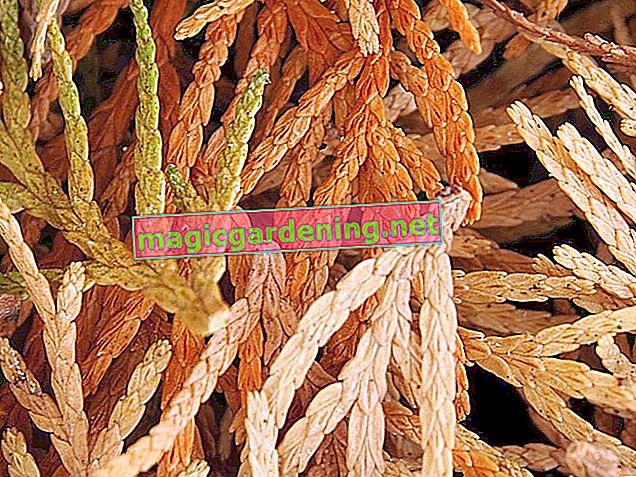
Provide panicle hydrangeas with organic fertilizer
Panicle hydrangeas like humus and nutrient-rich and acidic to neutral soil, but they often do well in poor, slightly alkaline soils. If your panicle hydrangea is in a rich substrate, it is basically sufficient to fertilize it with organic material. Work in plenty of mixed compost or cattle manure (€ 17.80 at Amazon *) and horn shavings (€ 6.39 at Amazon *) in the root area in the spring, a little later you can also mulch this region. Mulching also has the advantage that the moisture stays in the soil and you have to water less.
also read
- Panicle hydrangea loves the sun
- When should you prune your panicle hydrangea?
- It is best to plant panicle hydrangea in spring
Water panicle hydrangeas sufficiently
Compared to other hydrangea species, panicle hydrangeas are quite insensitive to drought. Of course, you shouldn't have to thirst, after all, hydrangeas generally need a lot of water. Mulch the root area and regularly check the plant for signs of lack of water. Water vigorously in dry seasons as well as in summer, whereby watering is best done in the early morning or evening hours, especially in the warm season.
Complete fertilizer only necessary on poor soils
Sometimes the organic fertilization of the panicle hydrangea is not enough, so you have to provide your panicle hydrangea with mineral fertilizer. This is especially true for specimens on nutrient-poor soils, but also for container plants. Panicle hydrangeas cultivated in tubs should be provided with a suitable fertilizer about every 8 to 14 days, whereby a liquid complete fertilizer is particularly suitable. Suitable fertilizers for hydrangeas are:
- Hydrangea fertilizer
- Rhododendron fertilizer
- or azalea fertilizer.
In order to prepare the panicle hydrangeas for winter in good time, you can first reduce the fertilization and finally stop from the end of August.
Yellow leaves indicate a lack of nutrients
If the leaves of your panicle hydrangea turn yellow, whereby the leaf veins often remain green, then there is chlorosis, ie a lack of nutrients. However, this can have many causes and does not have to be due to insufficient fertilization. Panicle hydrangeas are very sensitive to waterlogging, for example. The rotting roots, in turn, can no longer adequately supply the above-ground parts of the plant, which promptly leads to chlorosis. So check carefully why your panicle hydrangea is deficient and then take targeted action.
Tips & Tricks
An unsuitable soil, ie too alkaline or calcareous, can also be responsible for chlorosis. In such a case, mixing in rhododendron or bog soil helps.







